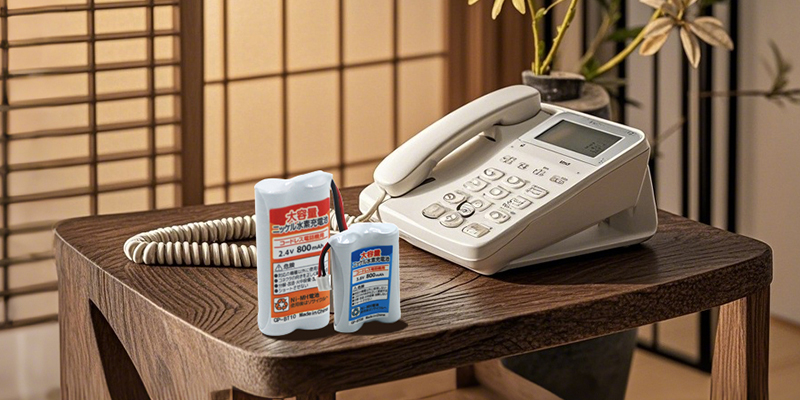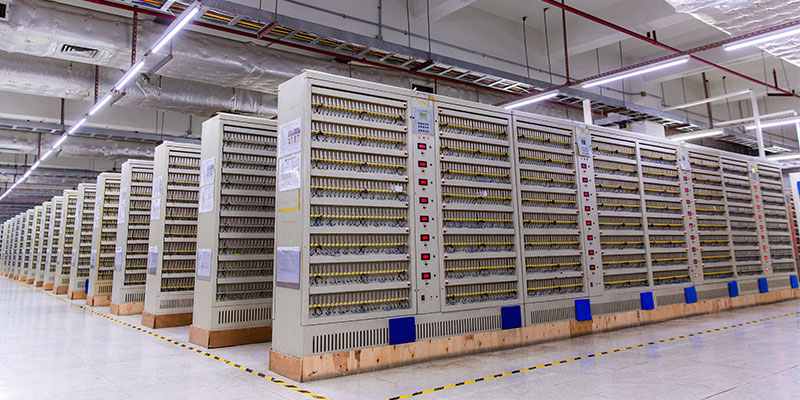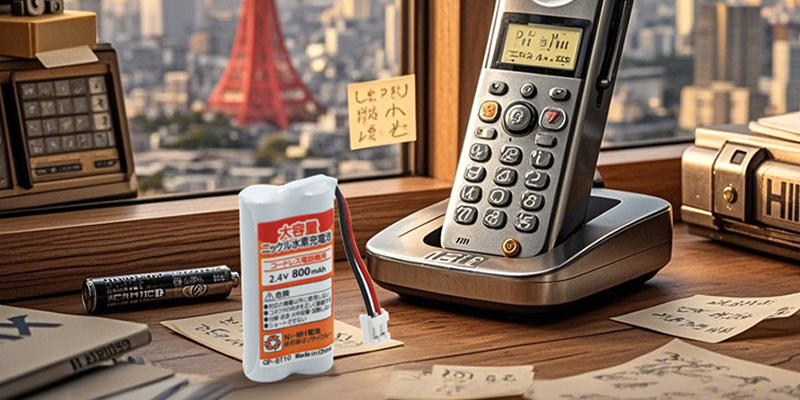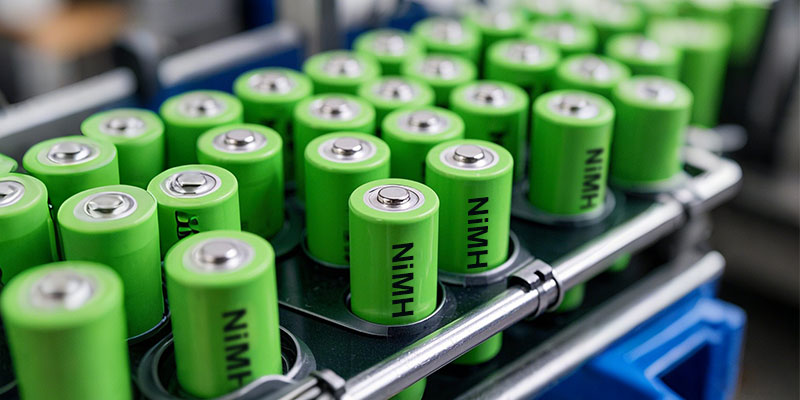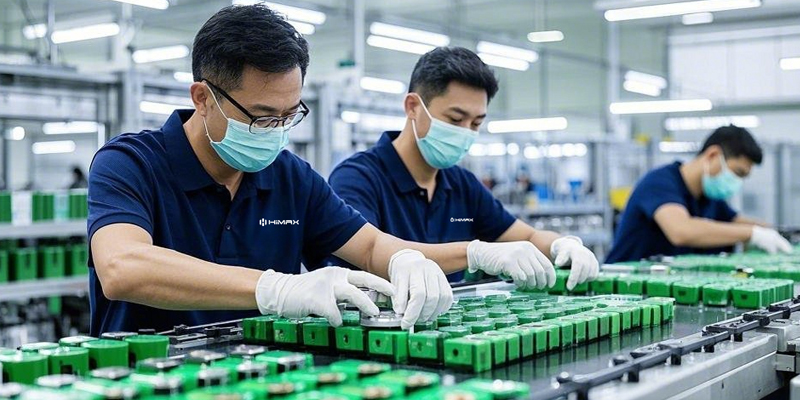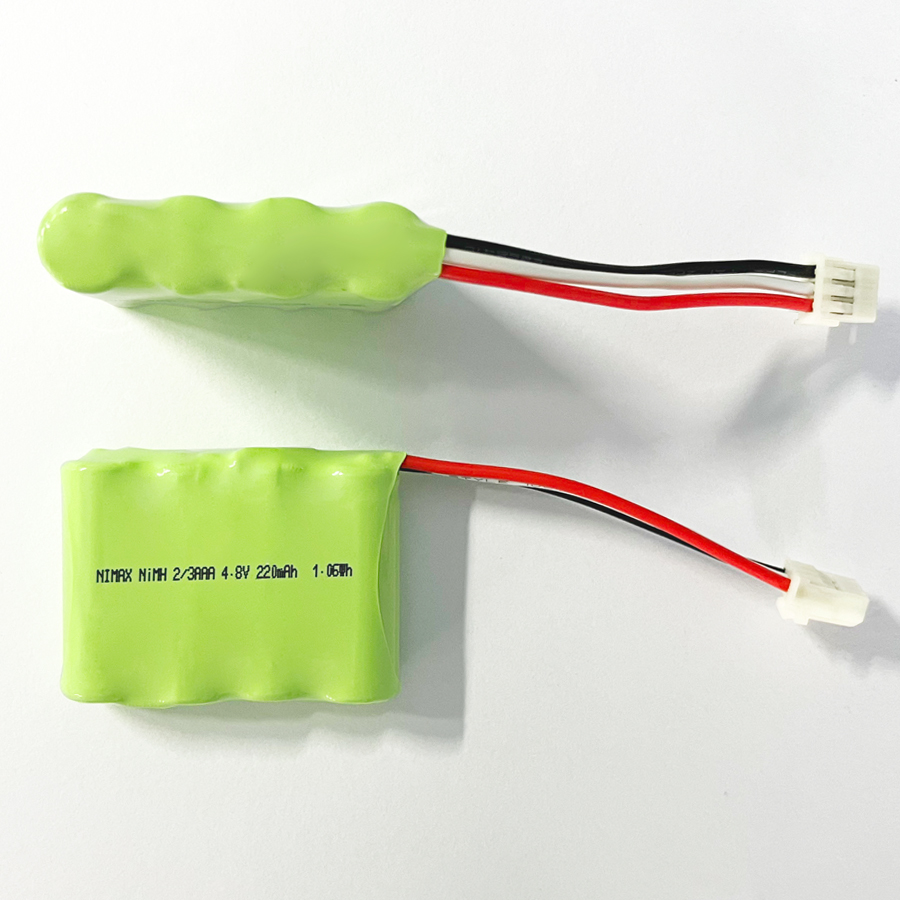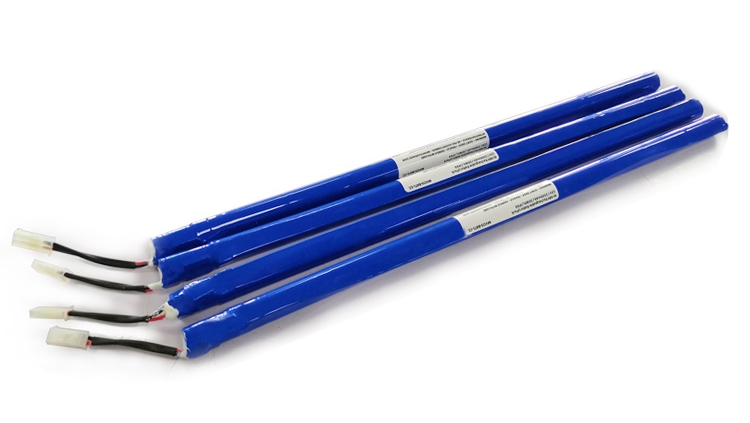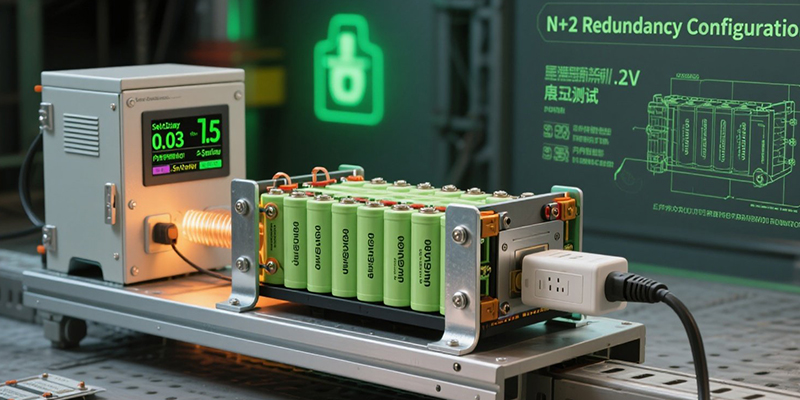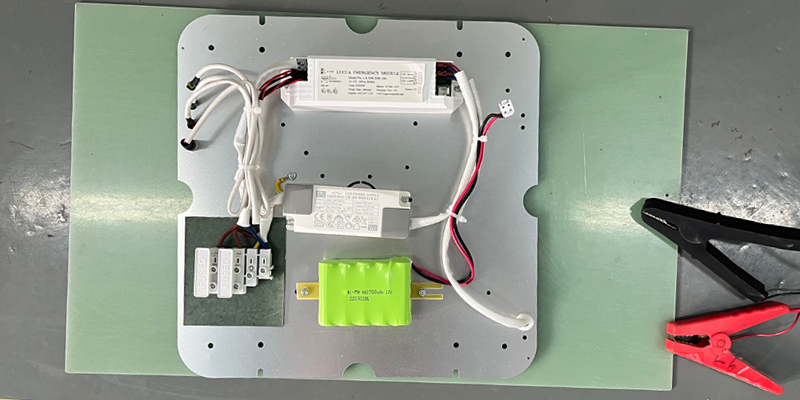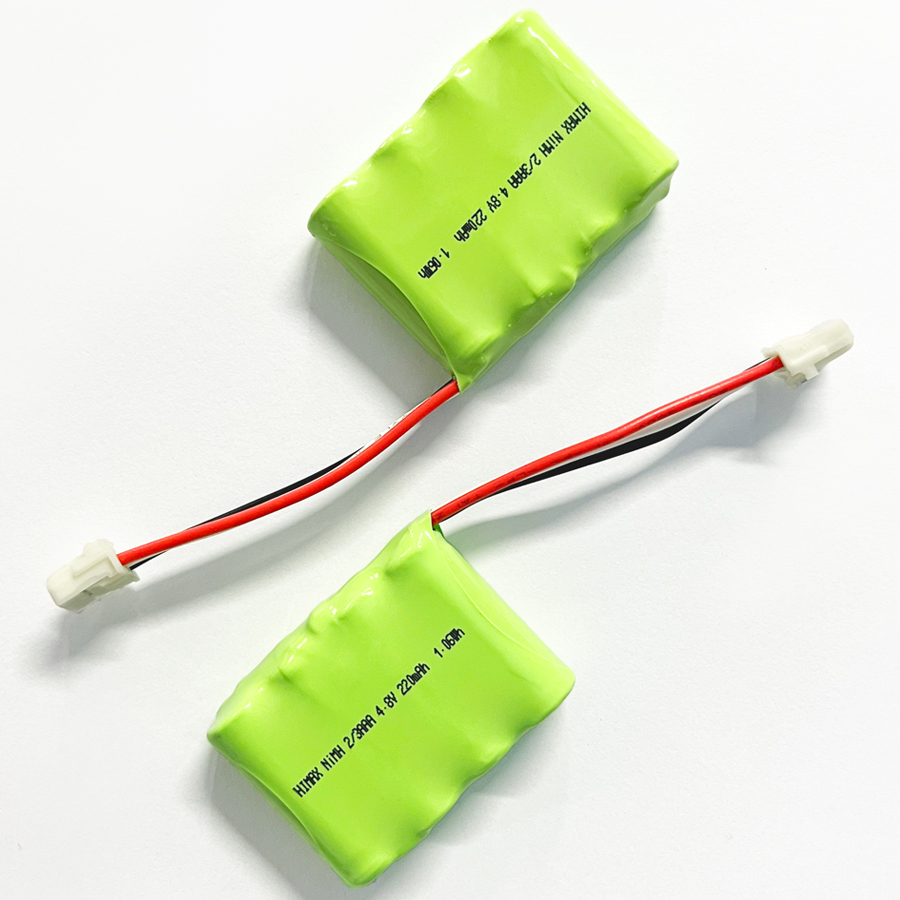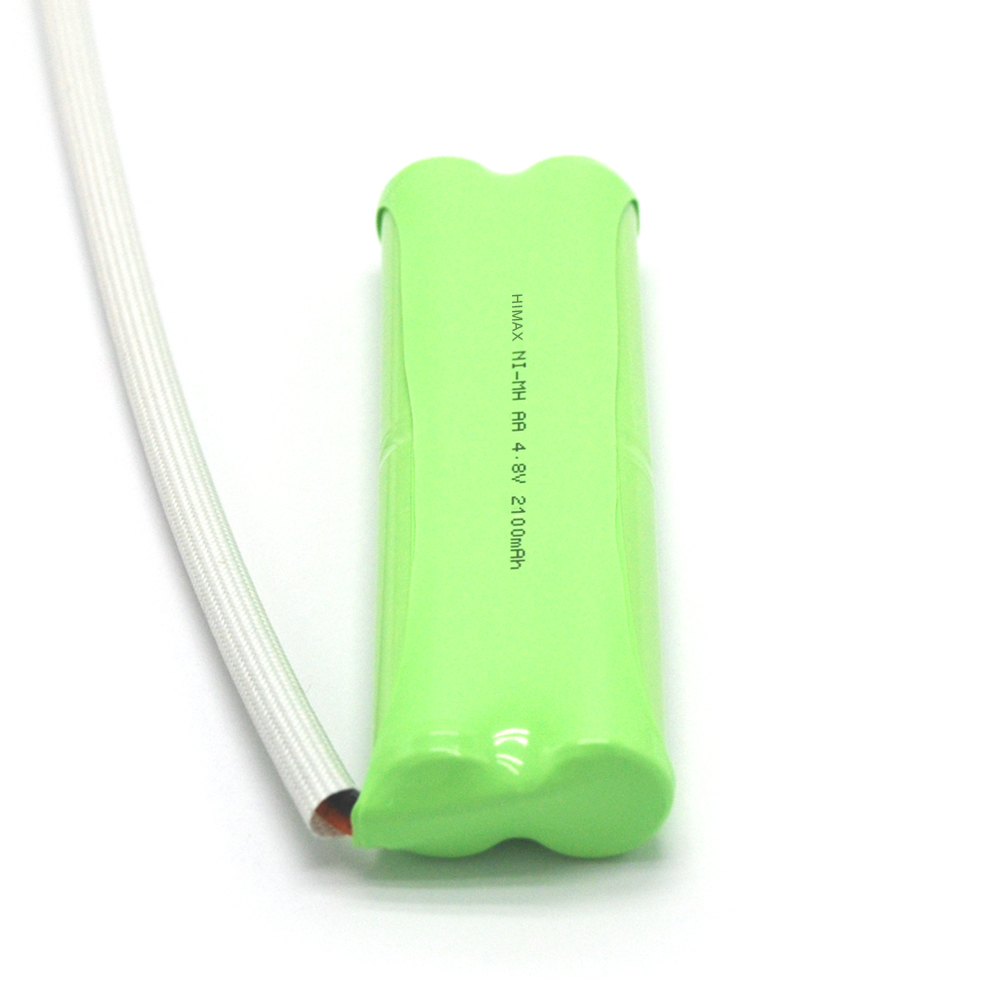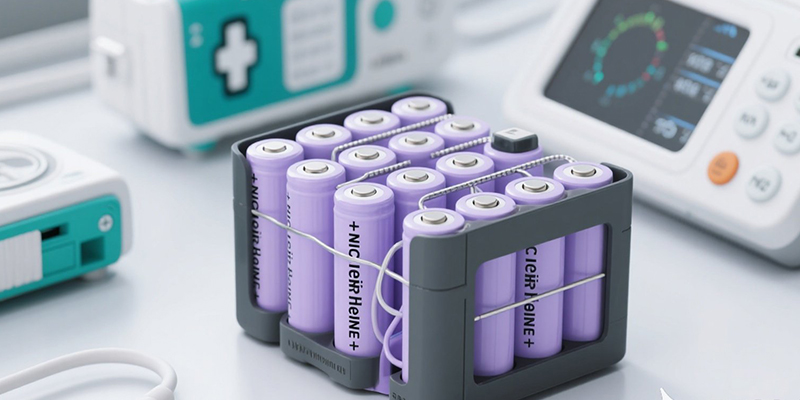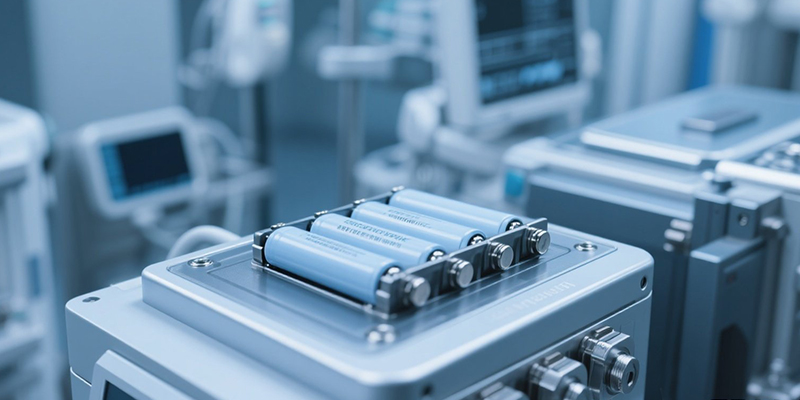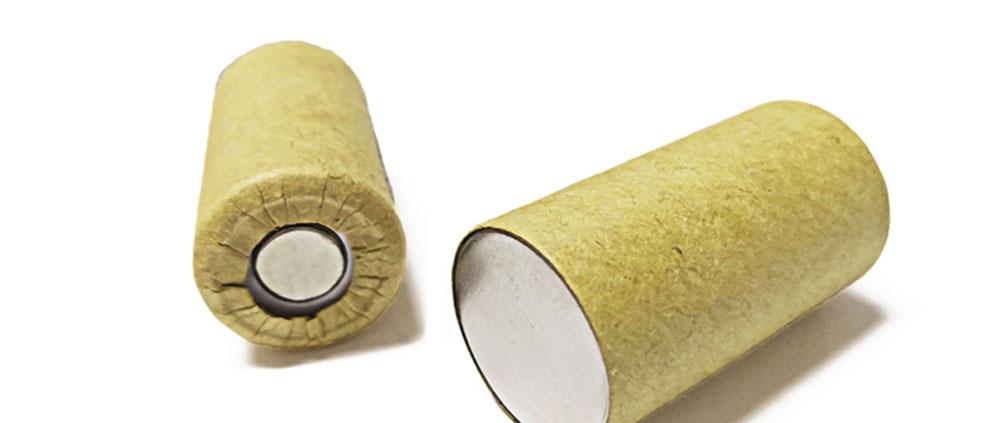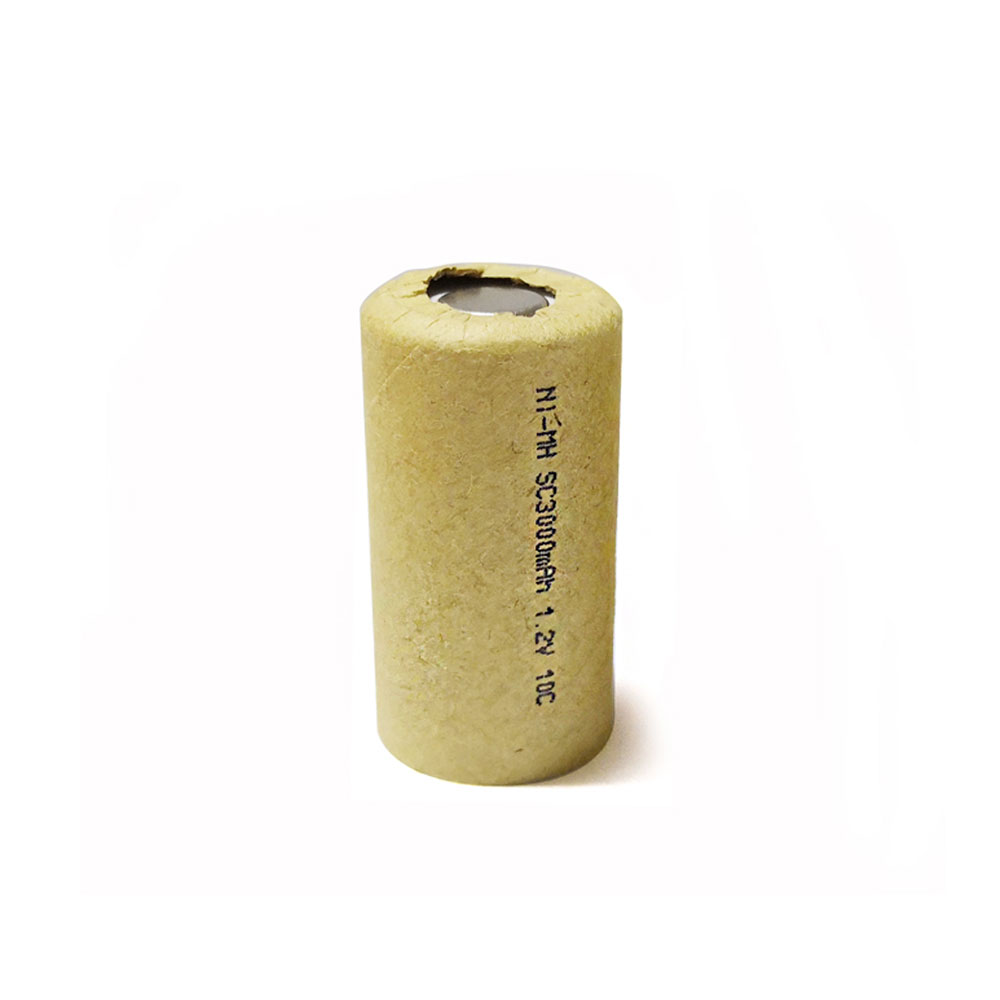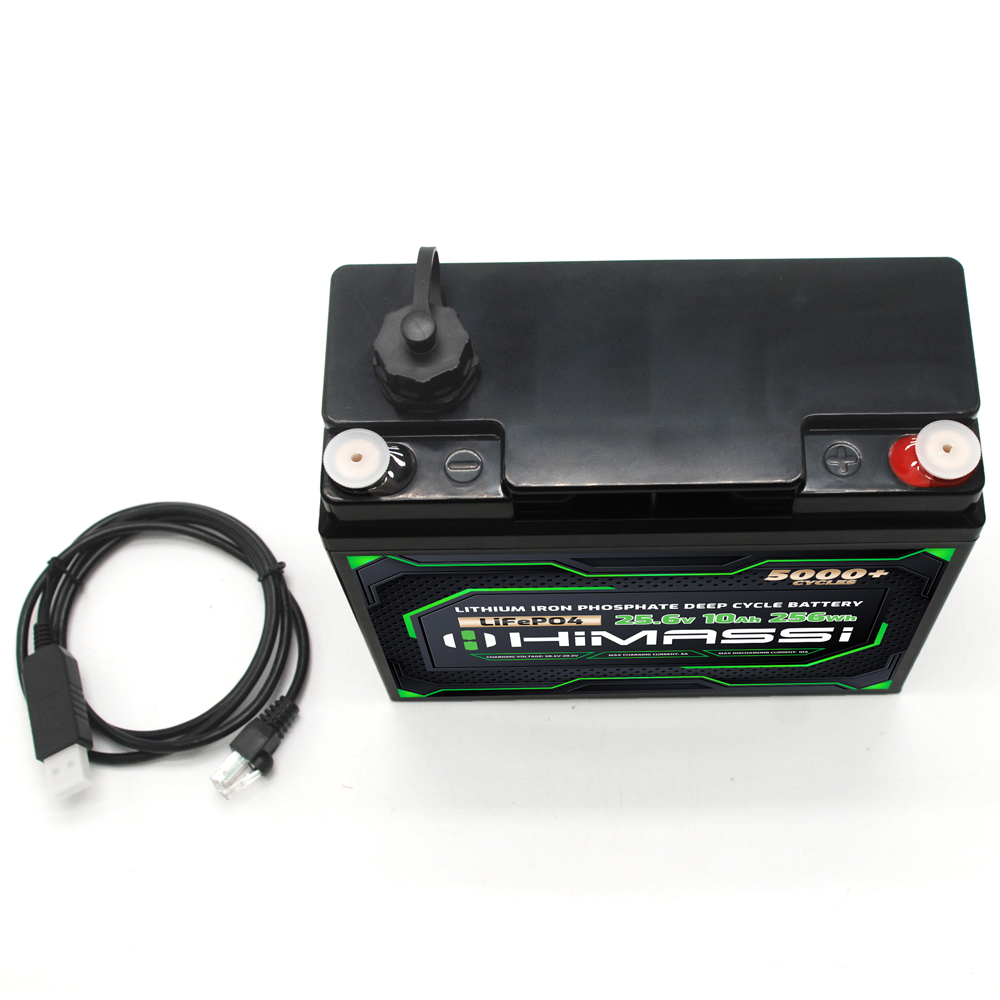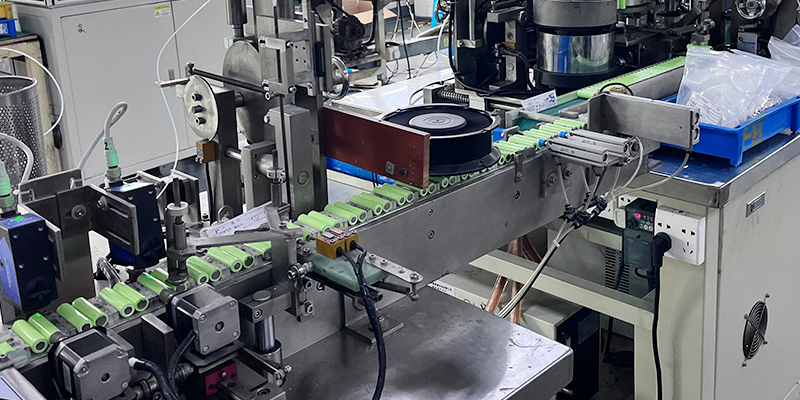In the world of rechargeable batteries, Nickel-Metal Hydride (NiMH) batteries stand out for their eco-friendliness, high capacity, and versatility. From powering household gadgets to industrial tools, NiMH batteries have earned a solid reputation for reliability and safety on the global market. As a trusted name in battery solutions, HIMAX is dedicated to delivering high-performance energy products. In this guide, we’ll dive deep into the features, advantages, and drawbacks of NiMH batteries, while exploring real-world applications to help you understand why they’re a top choice for green energy. Curious about why NiMH batteries are so popular in eco-conscious markets like Europe? Let’s find out!
Features and Working Principles of NiMH Batteries
1.1 What Are NiMH Batteries?
NiMH batteries are rechargeable power sources that use a hydrogen-absorbing alloy as the negative electrode, nickel oxyhydroxide (NiOOH) as the positive electrode, and a potassium hydroxide (KOH) solution as the electrolyte. Unlike their predecessor, Nickel-Cadmium (NiCd) batteries, NiMH batteries are free of toxic cadmium, making them more environmentally friendly. They’re widely used in consumer electronics, power tools, and hybrid vehicles. With a nominal voltage of 1.2V per cell and capacities typically ranging from 1000 to 2900mAh, NiMH batteries are perfect for high-drain devices.
1.2 How They Work
The operation of NiMH batteries relies on a reversible chemical reaction. During charging, the hydrogen-absorbing alloy in the negative electrode captures hydrogen ions, forming a metal hydride. Meanwhile, the nickel oxyhydroxide in the positive electrode transforms into nickel oxide, releasing electrons. When discharging, the process reverses: the alloy releases hydrogen ions, generating electrical energy to power devices. This efficient and stable reaction ensures reliability and a long lifespan. HIMAX NiMH batteries typically offer 500 to 1000 charge cycles, depending on usage and maintenance.
1.3 Technical Specifications
The performance of NiMH batteries hinges on their technical specs. For example, standard AA NiMH batteries can deliver capacities of 2500–2900mAh, far surpassing traditional alkaline batteries. Their nominal voltage of 1.2V is slightly lower than the 1.5V of alkalines, but their consistent output makes them ideal for devices requiring steady power. Many NiMH batteries, including those from HIMAX, support fast charging, with some models fully charging in just 1–2 hours, boosting convenience for both home and professional use.
Advantages of NiMH Batteries
2.1 High Capacity and Strong Current Output
One of the biggest strengths of NiMH batteries is their impressive capacity. Compared to NiCd batteries, NiMH offers 2–3 times higher capacity, with AA cells reaching up to 2900mAh. This makes them a powerhouse for high-drain devices like digital cameras, remote-controlled toys, and portable speakers, ensuring stable performance even under heavy use. Additionally, NiMH batteries excel at delivering high current, making them a go-to choice for power tools like drills and saws that demand instant bursts of energy.
2.2 Eco-Friendly and Safe
Sustainability is a key advantage of NiMH batteries. Free of toxic cadmium, they have a much lower environmental impact than NiCd batteries and boast high recyclability, aligning with strict EU regulations like the RoHS directive. According to the International Energy Agency (IEA), NiMH batteries produce over 90% less carbon emissions during production and use compared to fossil fuel-powered devices. Safety is another plus: built-in protection mechanisms minimize risks of overheating or explosion during overcharging or short-circuiting, making HIMAX NiMH batteries a safe pick for household use.
2.3 Versatility and Cold-Weather Performance
NiMH batteries are highly versatile, serving as direct replacements for standard AA or AAA alkaline batteries in devices like flashlights, wireless mice, and gaming controllers. Their ability to perform in cold temperatures is particularly impressive, maintaining functionality at -4°F (-20°C), which is ideal for outdoor activities in chilly climates. Whether you’re camping in the mountains or using devices at home, HIMAX NiMH batteries deliver dependable power.
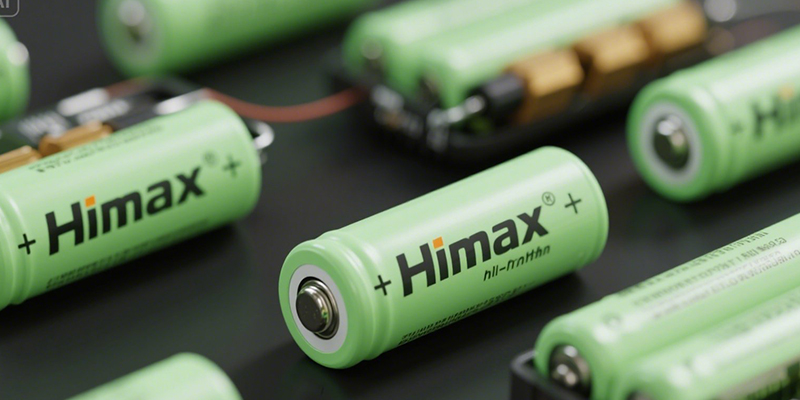
Disadvantages of NiMH Batteries
3.1 Weight and Size
Compared to lithium-ion batteries, NiMH batteries have a lower energy density, meaning they’re heavier and bulkier for the same capacity. A NiMH battery can weigh 30%–50% more than a lithium-ion equivalent, making it less suitable for lightweight devices like smartphones or drones. For users prioritizing portability, this can be a limiting factor.
3.2 Memory Effect and Self-Discharge
NiMH batteries suffer from a slight memory effect, where repeated partial discharges before recharging can temporarily reduce capacity. To mitigate this, it’s recommended to fully discharge and recharge the battery every few months. Additionally, NiMH batteries have a high self-discharge rate, losing about 20%–30% of their charge per month when idle. Users need to recharge them periodically during long-term storage to maintain performance.
3.3 Lifespan and Cost
While NiMH batteries can last for 500–1000 charge cycles, this is shorter than the 1000–2000 cycles of lithium-ion batteries. High temperatures (above 113°F or 45°C) can further reduce their lifespan. Upfront costs for NiMH batteries are also higher, and they often require a dedicated smart charger to optimize performance, which can add to the expense for budget-conscious buyers.
Common Applications for NiMH Batteries
4.1 Household Electronics
NiMH batteries shine in high-drain consumer electronics. For instance, digital cameras in continuous shooting mode rely on the steady power and high capacity of NiMH batteries to keep snapping photos. Remote-controlled toys, wireless keyboards, and portable speakers also benefit from their reliability and safety, making HIMAX NiMH batteries a favorite among families.
4.2 Industrial and Transportation
In industrial settings, NiMH batteries power tools and backup systems. Their ability to deliver high current and withstand heavy use makes them ideal for drills, saws, and other equipment. Hybrid vehicles often use NiMH batteries as auxiliary power sources, leveraging their safety and long cycle life. Demand for NiMH batteries remains strong in Europe’s manufacturing and automotive sectors.
How to Choose High-Quality NiMH Batteries
5.1 Capacity and Brand
When selecting NiMH batteries, prioritize high-capacity models (2500mAh or above) to meet the needs of power-hungry devices. Opt for reputable brands like HIMAX, which undergo rigorous testing to ensure consistent quality and reliable support. HIMAX NiMH batteries are designed for durability and performance.
5.2 Charger Compatibility
Using a smart charger can significantly extend the life of NiMH batteries. These chargers detect the battery’s status to prevent overcharging or over-discharging, preserving health. HIMAX recommends pairing its batteries with dedicated chargers for optimal efficiency and safety.
5.3 Safety and Certifications
High-quality NiMH batteries should carry certifications like CE and RoHS, ensuring safety and environmental compliance. Look for products with overcharge protection and temperature control. HIMAX NiMH batteries meet stringent EU standards, offering peace of mind for users.
Why Choose HIMAX NiMH Batteries
Looking for high-performance, eco-friendly, and dependable NiMH batteries? HIMAX NiMH batteries are the way to go. With capacities up to 2800mAh, they power everything from digital cameras to power tools and household electronics. Their cadmium-free design aligns with EU RoHS standards, ensuring easy recycling and minimal environmental impact. Featuring excellent cold-weather performance and built-in overcharge protection, HIMAX batteries deliver consistent power in any condition. Visit the HIMAX website today to explore our NiMH battery lineup and energize your devices with sustainable, reliable power!

